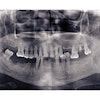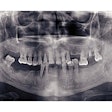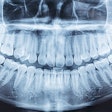Children with and without autism have similar levels of mercury in their blood streams, according to a study published this week in the journal Environmental Health Perspectives.
Conducted at the University of California's MIND Institute as part of the Childhood Autism Risks from Genetics and the Environment Study, the research is the most rigorous examination to date of blood-mercury levels in children with autism, the university said in a press release.
The researchers cautioned, however, that the study is not an examination of whether mercury plays a role in causing the disorder.
"We looked at blood-mercury levels in children who had autism and children who did not have autism," said lead author Irva Hertz-Picciotto, Ph.D.. "The bottom line is that blood-mercury levels in both populations were essentially the same. However, this analysis did not address a causal role because we measured mercury after the diagnosis was made."
Of the 452 participants included in the research, 249 were diagnosed with autism, 143 were developing typically and 60 had other developmental delays, such as Down syndrome.
The study looked at a wide variety of sources of mercury in the participants’ environments, including fish consumption, personal-care products, vaccinations, and dental fillings.
At the outset, the children with autism appeared to have significantly lower blood-mercury levels than the typically developing children. But children with autism tend to be picky eaters and, in this study, ate less fish, the researchers noted. When adjusted for their lower levels of fish consumption, their blood-mercury concentrations were roughly the same as those of children with typical development and very similar to those found in a nationally representative sample of 1- to 5-year-old children.
The study also examined whether children who have amalgam fillings and who grind their teeth or chew gum had higher blood-mercury levels. In fact, those children who both chew gum and have amalgams did have higher blood-mercury levels.
"It's time to abandon the idea that a single 'smoking gun' will emerge to explain why so many children are developing autism," Hertz-Picciotto said. "The evidence to date suggests that, without taking account of both genetic susceptibility and environmental factors, the story will remain incomplete."


















